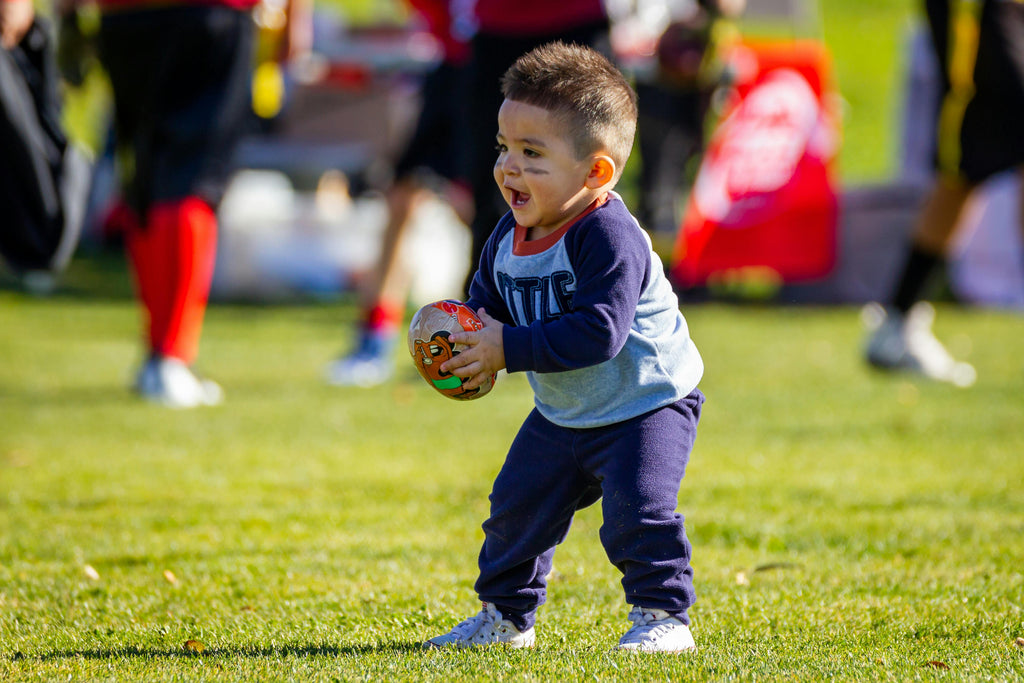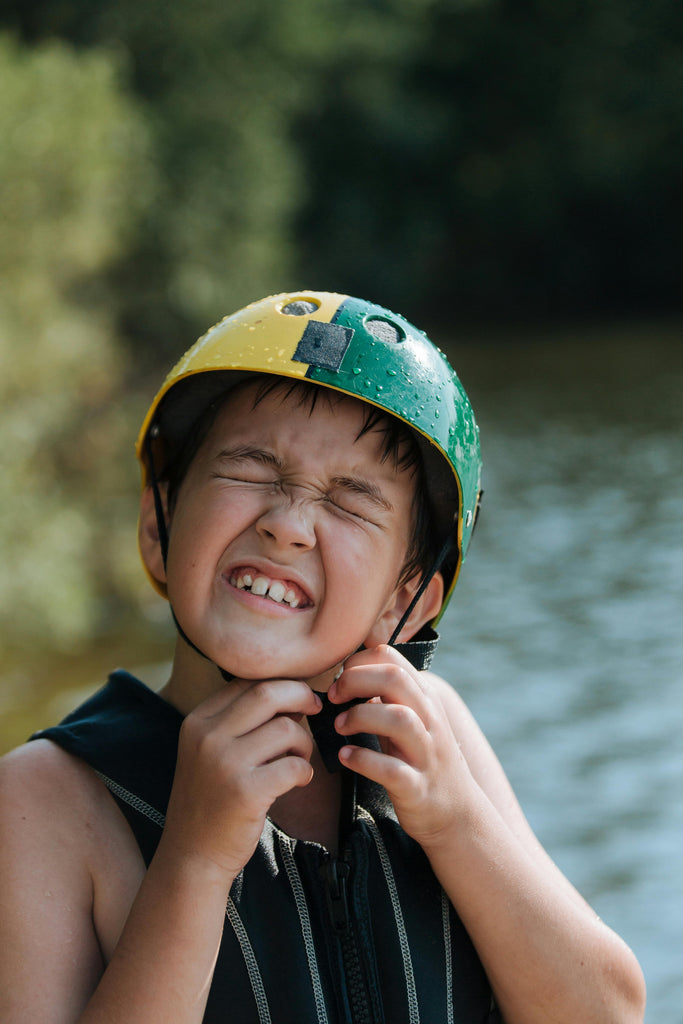As parents, ensuring the safety and well-being of our children is always a top priority. While sports activities offer numerous benefits, such as physical fitness, teamwork, and discipline, addressing child safety and sports is crucial. Let's explore some key strategies and considerations to safeguard our young athletes and give them the best possible experience on the field or court.
Child safety and sports go hand in hand. While we encourage our children to participate in sports for the numerous benefits they offer, it's imperative to prioritise their safety above all else. Several aspects must be considered, from proper equipment to supervision and injury prevention, to ensure our young athletes thrive in a safe environment.

Tailoring Sports Choices to Child Safety
When selecting a sport, it's essential to consider your child's age, physical abilities, and interests. Opting for activities that match their developmental stage and skill level can reduce the risk of injuries and enhance their enjoyment of the game.
Consider Age Appropriateness
Every child develops at their own pace, both physically and emotionally. Choosing a sport that aligns with your child's age and developmental stage is crucial. Younger children may benefit from introductory activities focusing on fundamental movements and coordination. In comparison, older children may be ready for more complex sports that involve higher levels of physical exertion and skill.
Assess Physical Abilities
Consider your child's physical abilities and any potential limitations or medical conditions they may have. Some sports may require a certain level of strength, flexibility, or endurance, while others may pose risks for individuals with specific health concerns. Consulting with your child's pediatrician or a sports medicine professional can help determine which activities are suitable and safe for them.
Match Interests and Motivation
Engaging your child in sports they enjoy and feel passionate about can significantly enhance their overall experience and motivation to participate. Consider their interests, preferences, and personality traits when exploring different sports options. By choosing activities that align with their interests, you can foster a sense of enthusiasm and commitment, making it more likely for them to adhere to safety guidelines and regulations while actively participating in the sport.

Gear Up for Safety
Proper sports equipment is non-negotiable when it comes to child safety and sports. From helmets and pads to appropriate footwear, investing in high-quality gear that fits well can significantly reduce the risk of injuries during play.
Invest in Proper Protective Equipment
Prioritise purchasing high-quality protective gear specifically designed for the sport your child is participating in. This may include helmets, pads, mouthguards, goggles, and other specialised equipment. Ensure that the gear meets safety standards and regulations to provide adequate protection against common injuries associated with the sport.
Ensure Proper Fit
Properly fitting equipment is just as important as the quality of the gear itself. Ill-fitting helmets, pads, or footwear can compromise their effectiveness and increase the risk of injury. Take the time to properly size and adjust each piece of equipment to ensure a snug and comfortable fit. Regularly check for any signs of wear or damage and replace or repair items to maintain optimal safety.
Educate Your Child on Proper Gear Use
Teach your child the importance of consistently and correctly wearing protective gear during practices and games. Emphasise each piece of equipment's role in preventing injuries and encourage them to take responsibility for their safety. Instilling good habits early on, such as wearing a helmet. At the same time, biking or skateboarding can help establish a culture of safety awareness that extends beyond the sports field.
Eyes on the Field
Ensuring adequate supervision is crucial for child safety during practice sessions or game days. Coaches, referees, and volunteers oversee activities and intervene when necessary to prevent accidents or misconduct.
Active Monitoring and Oversight
Coaches, referees, and volunteers actively monitor sports activities, watching players identify potential hazards or risky behaviours. They assess the playing field or court for any obstacles or dangers that could harm athletes and take proactive measures to mitigate risks. By maintaining a vigilant presence, they can quickly intervene to prevent accidents or injuries before they occur.
Enforcement of Rules and Regulations
Coaches, referees, and volunteers enforce the sport's rules and regulations, ensuring that all participants adhere to fair play and safety guidelines. They provide clear instructions and guidance to athletes regarding permissible conduct and appropriate behaviour during practices and games. By upholding standards of sportsmanship and discipline, they create a structured environment where safety is prioritised, and misconduct is addressed promptly and effectively.
Emergency Response and First Aid
Coaches, referees, and volunteers are trained to respond promptly and effectively in the event of injuries or emergencies on the field or court. They are equipped with basic first aid skills and knowledge of emergency protocols to assist injured athletes immediately.
Whether administering first aid for minor cuts and bruises or coordinating emergency medical care for more serious injuries, their quick response can make a significant difference in ensuring the well-being of young athletes. They may also have access to communication devices to summon additional assistance or resources as needed.
Talk It Out
Encouraging open communication with your child about their sports experiences is essential. Teach them to recognise and report any discomfort, pain, or concerns, fostering a culture of trust and accountability.
Establish a Safe and Supportive Environment
Create a safe and supportive space where your child feels comfortable sharing their thoughts, feelings, and sports-related experiences. Encourage open-ended conversations and active listening, allowing them to express themselves without fear of judgment or criticism. Demonstrating empathy and understanding can cultivate a sense of trust and openness that facilitates meaningful dialogue about sports participation.
Educate Your Child About Injury Awareness
Teach your child to recognise the signs and symptoms of potential injuries or discomfort associated with sports activities. Emphasise the importance of listening to their bodies and proactively addressing their concerns.
Please encourage them to communicate openly with coaches, teammates, and medical professionals about any pain, discomfort, or changes in their physical condition. By empowering them with knowledge and awareness, you can help them make informed decisions about their health and safety.
Lead by Example and Encourage Feedback
Lead by example by modelling open communication and transparency in your interactions with your child. Please share your experiences, concerns, and observations related to sports and encourage them to do the same. Demonstrate active listening and receptivity to their feedback, ideas, and suggestions, validating their perspectives and fostering a sense of mutual respect and collaboration. By engaging in constructive dialogue and problem-solving, you can strengthen your parent-child bond and promote a culture of accountability and teamwork both on and off the field.

Protecting the Brain
Concussions are a serious concern in sports, especially for young athletes. Educate yourself and your child about the signs and symptoms of concussions, and emphasise the importance of seeking medical attention if a head injury occurs.
Education on Signs and Symptoms
Educate yourself and your child about the signs and symptoms of concussions. These may include headache, dizziness, confusion, nausea, sensitivity to light or noise, and changes in mood or behaviour. Ensure your child understands the importance of recognising these symptoms in themselves and their teammates. By raising awareness, you empower them to identify potential concussions early and take appropriate action.
Emphasis on Reporting Injuries
Encourage a culture of honesty and transparency when reporting injuries, especially head injuries. Teach your child that it's essential to speak up if they experience any symptoms of a concussion or suspect that a teammate may be injured. Emphasise that there is no shame in seeking help or sitting out of a game or practice if there's a risk of further harm.
Importance of Medical Attention
Stress the importance of seeking medical attention promptly if a head injury occurs. Make sure your child knows that concussions are serious and require proper evaluation and treatment by a healthcare professional. Emphasise that returning to play too soon after a concussion can prolong recovery time and increase the risk of long-term complications. Encourage them to follow the guidance of their healthcare provider and adhere to any recommended rest and rehabilitation protocols.

Conclusion
Child safety and sports are inseparable components of a fulfilling athletic experience for young individuals. By prioritising proper equipment, training, supervision, and communication, we can create a supportive environment where our children can thrive and enjoy the many benefits of sports. Let's commit to safeguarding our young athletes and empowering them to pursue their passions safely and confidently.
Please browse our products or contact us if you need assistance.
